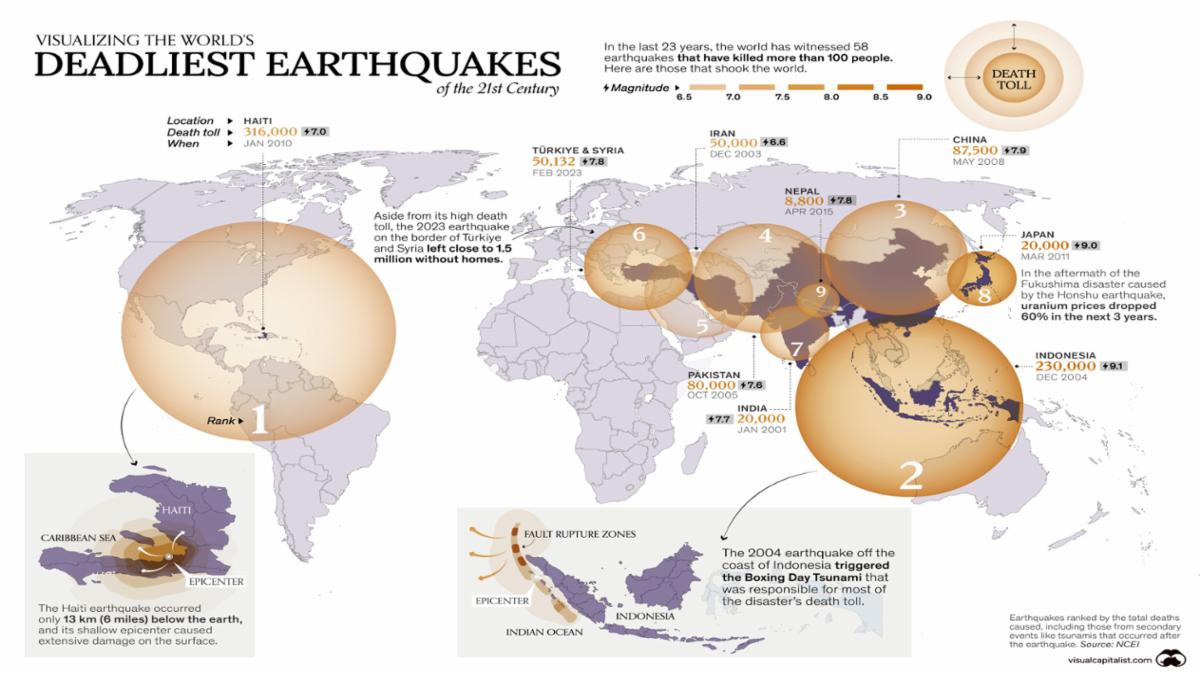Article Body
Taiwan Shaken by 5.9-Magnitude Earthquake Near Hualien; Authorities Report No Major Damage
Hualien, Taiwan – June 12:
In the early hours of Wednesday morning, the calm of Taiwan’s eastern coast was broken by a 5.9-magnitude earthquake that struck 71 kilometers south of Hualien City, according to the United States Geological Survey (USGS). The quake, which was recorded at a depth of 31 kilometers, rattled buildings and sent tremors through the mountainous terrain of Hualien County, a region known both for its beauty and seismic vulnerability.
Tremors in the Dawn: What Happened
The quake struck shortly after 6:45 AM local time and was strong enough to jolt residents out of sleep across parts of Hualien, Taitung, and northeastern Taiwan, though no tsunami warning was issued. While Taiwan’s Central Weather Administration (CWA) classified the quake as “moderate,” it emphasized that the epicenter’s location—deep and inland—likely reduced the destructive potential.
The USGS rated the tremor at 5.9 on the Richter scale, categorizing it as significant but not severe enough to cause widespread devastation under typical infrastructure standards.
Swift Emergency Response
In line with Taiwan’s well-drilled earthquake preparedness protocols, firefighters and rescue personnel were dispatched within minutes to assess any structural impacts, inspect bridges and tunnels, and check high-rise buildings for damage.
“We have completed initial rounds of checks in urban areas and rural zones. No casualties have been reported so far,” said Liu Cheng-Min, a spokesperson for Taiwan’s National Fire Agency. “Some residents in older buildings reported cracked walls and falling ceiling panels, but there is no indication of collapsed structures.”
Hualien: A City All Too Familiar With Quakes
The city of Hualien, nestled between the Central Mountain Range and the Pacific Ocean, sits atop a tectonic junction that has seen significant geological unrest in recent years. In 2018, a 6.4-magnitude earthquake caused the collapse of buildings in downtown Hualien, killing 17 people and injuring over 280. The memory of that disaster is still fresh, and residents remain vigilant.
This morning’s quake, though less intense, reignited concerns about the frequency of seismic activity in the region and raised questions about long-term urban resilience planning.
No Interruptions to Transportation or Utilities
Despite the shaking, Taiwan High-Speed Rail services continued uninterrupted, and Taoyuan and Hualien airports remained fully operational. Taiwan Power Company confirmed that no major outages or grid disturbances occurred as a result of the quake.
“Backup systems kicked in where needed, and structural audits are being carried out in all substations near the epicenter,” said the company’s crisis response head, Wen Chia-Lin.
However, minor delays were reported on the Eastern Rail Line, as crews temporarily halted service to inspect elevated tracks.
 How Prepared Is Taiwan?
How Prepared Is Taiwan?
Few nations are as earthquake-ready as Taiwan. Located along the Pacific Ring of Fire, the country conducts frequent evacuation drills, employs rigid building codes, and has real-time seismic alert systems integrated into schools, workplaces, and public transport.
Today's quake served as a live test of those protocols—and, by early accounts, the system passed.
Expert Insights: Aftershocks Likely
Geologists from Taiwan’s Institute of Earth Sciences advised citizens to remain cautious over the next 48 hours, warning of possible aftershocks in the range of magnitude 4 to 5.5.
“These smaller tremors are common and expected after an event of this magnitude. People should stay informed but not panic,” said Dr. Kao Yi-Fang, a senior seismologist at the institute.
Residents have been urged to secure heavy items, check gas lines, and report structural weaknesses in homes and buildings.
Global Reactions and Local Resilience
The quake has drawn attention from global geological observatories, many of which are monitoring Taiwan closely as part of broader Pacific seismic networks. The USGS and Japan Meteorological Agency both flagged the event but did not issue any further alerts, citing low tsunami risk and controlled inland impact.
On social media, hashtags like #TaiwanEarthquake and #HualienShakesAgain began trending, with users sharing videos of swinging light fixtures, rattling windows, and emergency sirens piercing the early morning silence.
Despite the fear, a dominant tone emerged—gratitude that this time, nature spared lives.
Conclusion: Alert, Not Alarmed
Wednesday’s earthquake serves as a sobering reminder that Taiwan’s serene mountains and coastal beauty are woven with seismic fault lines. But if today’s incident proved anything, it's that preparedness pays off.
Thanks to swift emergency coordination, robust infrastructure, and public awareness, what could have been a disaster was reduced to a drill-like disruption.
As the region braces for potential aftershocks, authorities have urged calm, continued vigilance, and respect for geological unpredictability.
Comments